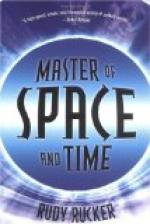One of the forerunners of the printing telegraph systems now in use was the Buckingham system, for many years employed by the Western Union Telegraph Company, but now for some time obsolete. The receiving mechanism of this system printed the messages on telegraph blanks placed upon a cylinder of just the right circumference to accommodate two telegraph blanks. The blanks were arranged in pairs, rolled into the form of a tube and placed around the cylinder. When two messages had been written a new pair of blanks had to be substituted. This was a rather awkward arrangement, but at a time when more highly developed apparatus had not been perfected it served its purpose to good advantage.
The printing telegraphs of to-day produce their messages by the direct operation of typewriting machines or mechanisms operating substantially in the same manner as the ordinary typewriting machine. The methods by which the electrical impulses coming over the line are transformed into mechanical operation of the typewriter keys, or what corresponds to the typewriter keys, vary. It would be difficult to describe how this function is performed without entering upon much detail of a highly technical character. Suffice it to say that means have been devised by which each combination of electrical impulses coming over the line wire causes a channel to be opened for the motor operation of the typewriting key-bar operating the corresponding letter upon the typewriter apparatus. These machines write the messages with proper arrangement of the date line, address, text, and signature, operating not only the type, but also the carriage shift and the line spacing as required. A further step in advance has been made by feeding the blanks into the receiving typewriter from a continuous roll, an attendant tearing the messages off as they are completed. The entire operation is automatic from beginning to end and capable of considerable speed.
There remained the problem of devising some means by which a number of automatic units could be operated over the same line at the same time. This is not by any means a new proposition. Here again various solutions have been offered by the scientists both of Europe and of this country, and different systems designed to accomplish the desired object have been placed in operation. One of the most recent, and we believe the most efficient so far developed, is the so-called multiplex printer system, devised by the engineers of the Western Union Telegraph Company and now being extensively used by that company. Perhaps the best picture of what is accomplished by this system can be given by an illustration. Let us assume a single wire between New York and Chicago. At the New York end there are connected with this wire four combined perforators and transmitters, and four receiving machines operating on the typewriter principle. At the Chicago end the wire is connected with a like number of sending and receiving machines.




